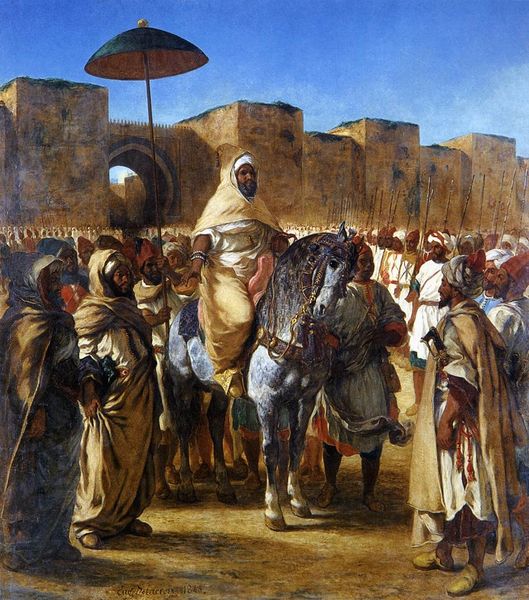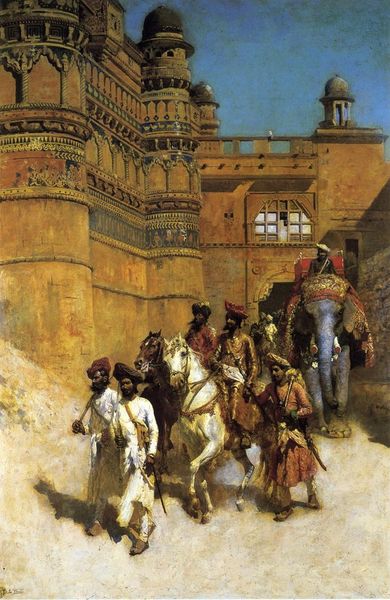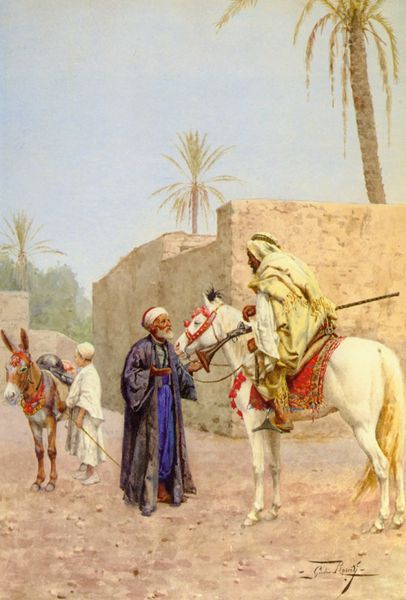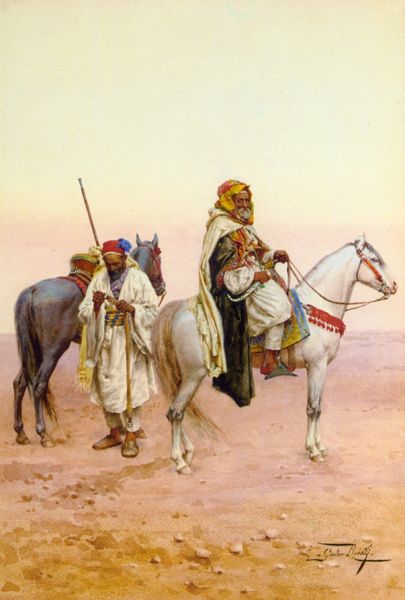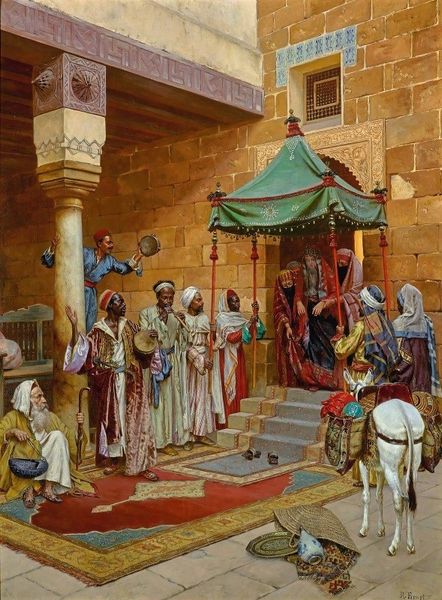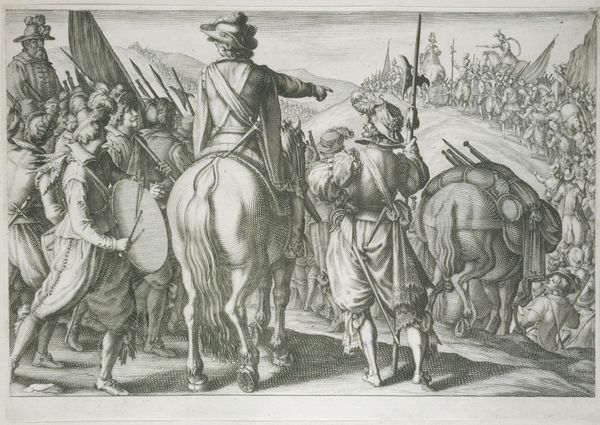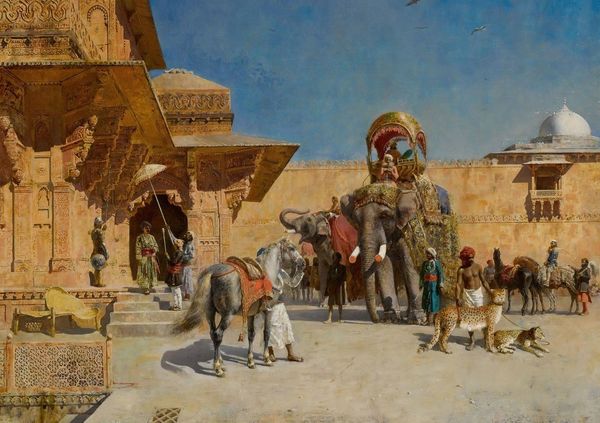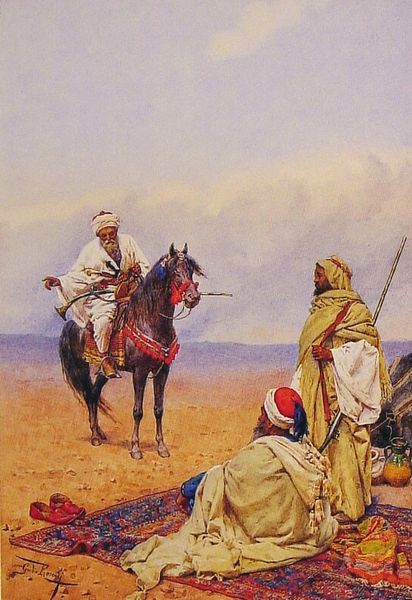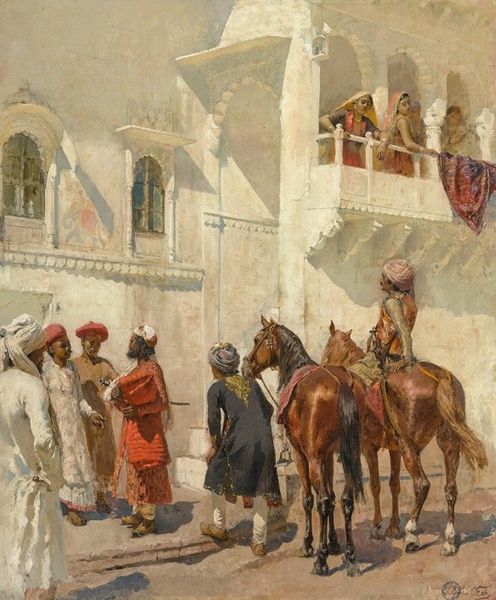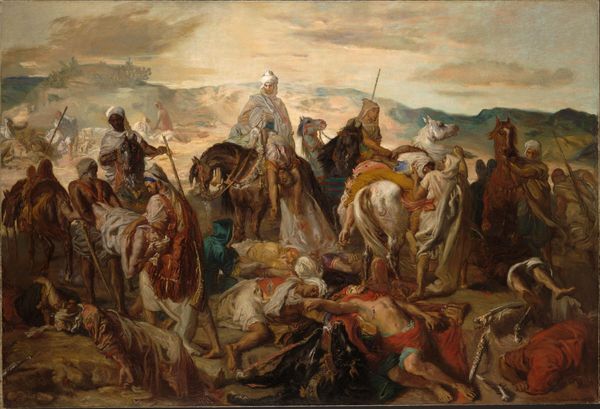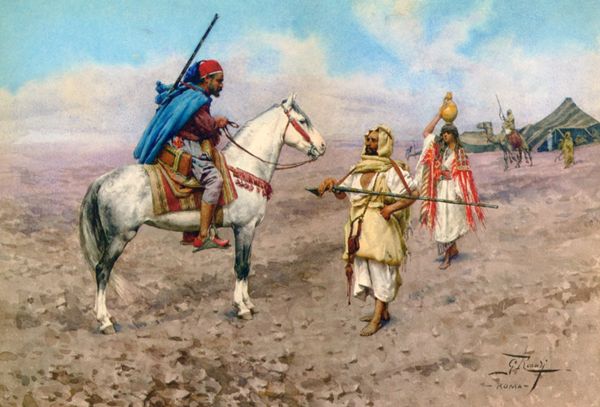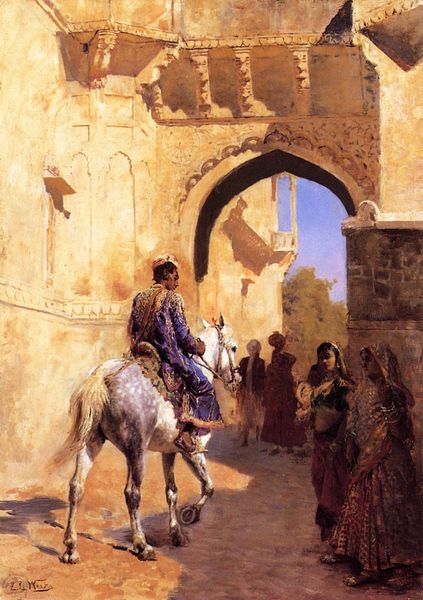
Dimensions: 66 x 56 cm
Copyright: Public domain
Curator: Here we have Eugène Delacroix’s “Portrait of the Sultan of Morocco,” completed in 1862. It's an oil painting, and a striking example of his Orientalist period. Editor: It’s certainly evocative. I'm struck by the almost theatrical staging, the intense yellow cloak of the Sultan drawing the eye amidst the browns and reds of the scene. Curator: Delacroix’s travels to North Africa profoundly influenced his palette and subject matter. One should notice the labor that went into the weaving and embroidery. And further consider the role textiles play as markers of trade, wealth, and cultural exchange in 19th century Morocco. Editor: Absolutely. And think about the power of the horse as a symbol. It isn't just transport; it's about status, virility, and military might. And beyond the Sultan himself, what do you read from all those attendant figures? Each head wrapped in cloth? Each face with purpose? Curator: Many would have likely worked as servants for their entire lives. To better understand it, one has to consider French colonial ambitions at that time, and how they fueled such exotic depictions. Delacroix was, consciously or unconsciously, creating a market for fantasies and fictions tied to notions of colonialism. Editor: True, but beyond the political climate, there's also something intensely romantic about the idea of an artist encountering this "other" culture and then trying to capture it, distill its essence into paint on canvas. That very attempt is loaded with its own meaning. It tells us as much about Delacroix as it does about the Sultan, doesn't it? It perpetuates the "Morocco" mythology as seen by those external to it. Curator: And the construction of this 'Morocco', which is what such paintings offer is more about selling painting that offering real world context or accurate historical insight. These items fueled a fascination back in France. I consider those transactions most. Editor: Yes. A constructed dreamscape for European eyes. It underscores, finally, that art always exists in dialogue - a visual shorthand between the artist and his time, between the subject and its interpretation. Curator: To understand it is also to understand its circulation and original cultural value as trade and currency, both artistic and tangible. Editor: I leave this imagining the stories woven into those clothes, those tapestries, those very fabrics. A tapestry, rich in cultural information for the wearer.
Comments
No comments
Be the first to comment and join the conversation on the ultimate creative platform.
